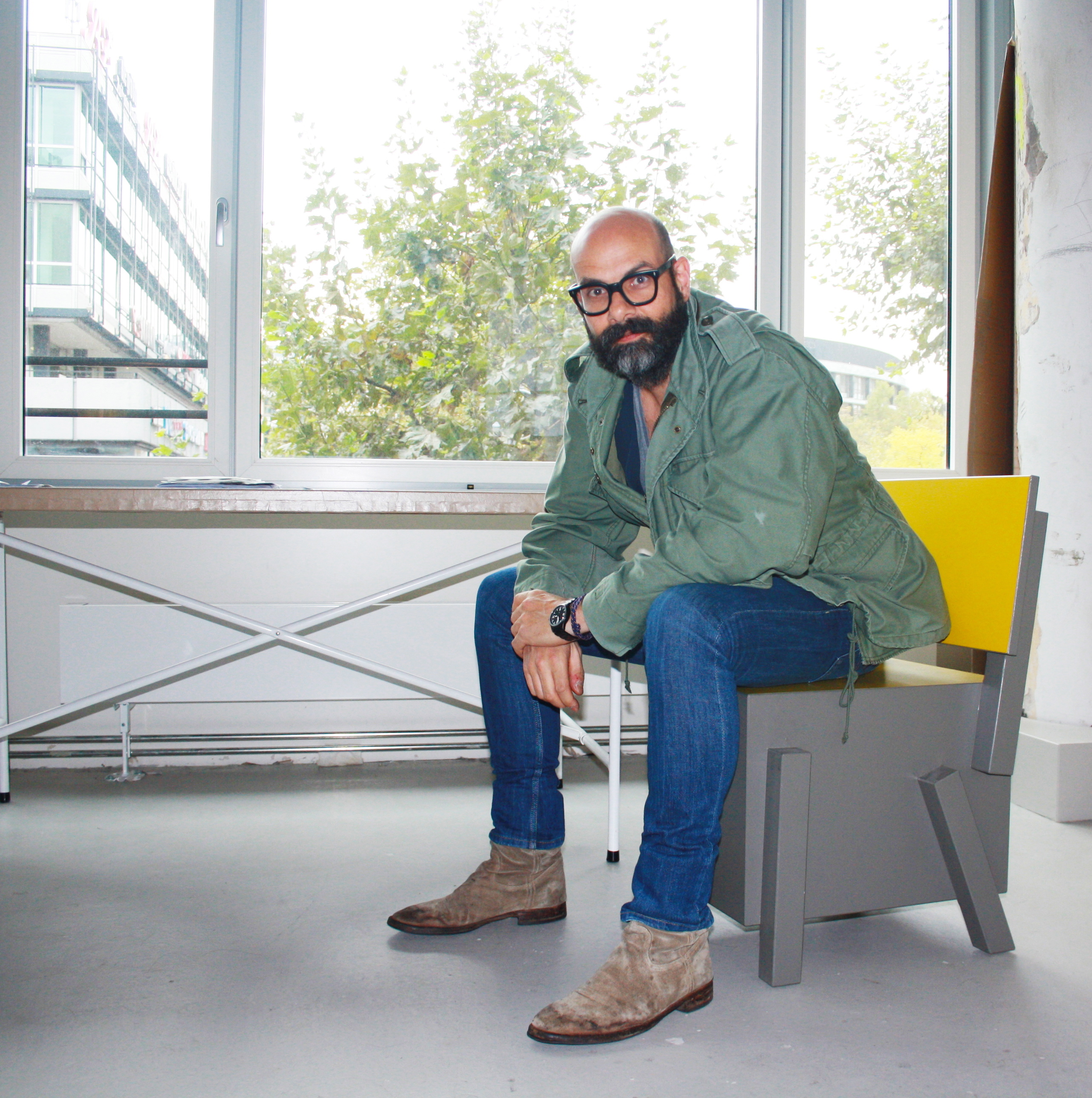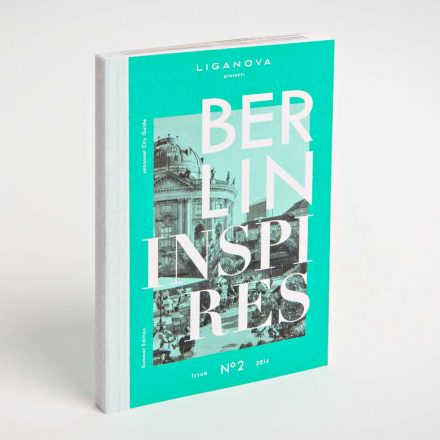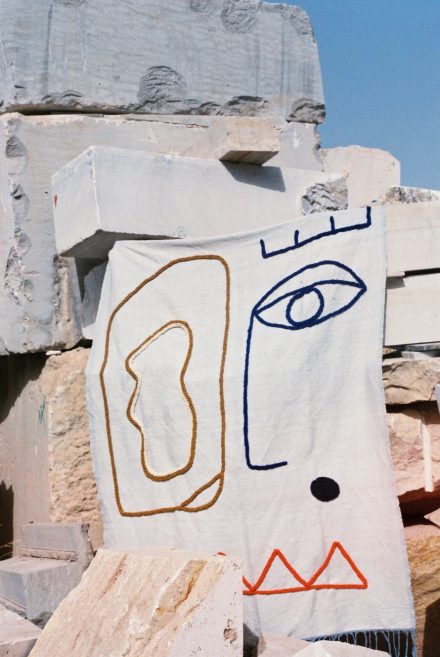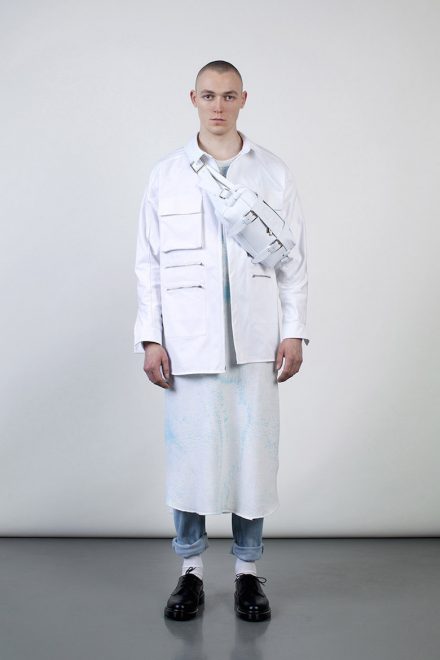Product designer, lecturer, craftsman, Michael Sans is nothing if not an all-rounder. After graduating Art Center College of Design in Pasadena, California, Sans found his way to Berlin where he successfully forged a career in design for several multinationals companies across different industries. On the side, Sans founded his own leather accessories label, producing sturdy, high quality bags and belts. Πrecently met up with the renaissance man at Bikini Berlin, where he just finished designing a workspace for Art Center exchange students.
You studied product design in the USA and just finished up designing LIDA, your furniture line for Art Center of College and Design in Pasadena. How important is that connection to the States for you?
It’s not important in terms of design since the university wanted to open something in Berlin. I have to focus on what’s going on here and not look back to LA. Personally I have a sentimental feeling with that city since I had the best and most interesting years of my life. I think Berlin and LA are easy to compare. They’re both in flux. New York, Paris and London are done and it’s impossible to buy space there. That is different to LA and Berlin. Both cities were discovered more recently and have a very young spirit. In LA there’s a huge divide between the big chunk of the Hispanic, poorer population and the Nouveau Riche. I also see that in Berlin, too, sometimes. Another comparison is the art scene in LA that is extremely vivid at the moment, just as it is here.
The furniture designs echo the nature of its location as well as its surroundings, being the zoo. Tell me, how are they connected?
We were in a weird position since the space is temporary and therefore we are not allowed to do anything to the architecture. All I had to work with was the bare space so everything we did was supposed to add to the room–adding to the roughness of it. I like the contrast of the slick stores in this neighborhood and the basic lay-out of the Art Center space here. That’s why the furniture is also basic.
So what is the connection to the zoo then?
It is more abstract. The students are kind of like the zoo. There are a lot of people here put together who don’t know each other. It’s a very artificial situation. The students got assigned a work group, have to work together for 14 weeks and sometimes even share rooms.
The surroundings, the zoo, this concrete, bare space and you having to create something that connects all of those elements–how difficult was this task?
While designing you never keep this in mind. Of course you see the space, you see the budget and get a time frame. Then you have to trust yourself, your experience and it sort of turns out right. Obviously you research and look what works for the space, but in the end you have to make tons of compromises. In a perfect world one would approach it like that, just doing research and coming up with the great idea. In schools and also here in the center we teach students this method of working, but in fact it is often about money, time and other people not liking your ideas or having other suggestions.


You’ve also had clients in the fashion industry such as Hugo Boss and Pierre Cardin. How did you enter this world?
Via personal contacts. It started with Hugo Boss where I knew the head of visual merchandising and she gave me a chance to create an art installation for the shop window. It wasn’t at all connected to the brand. They didn’t tell me what the next collection, colors or theme would be. I was completely free to do what I wanted. They intentionally separated it from the products since it was for the Berlin Biennale. Then I got noticed by Ahlers AG which is the holding company of Pierre Cardin and Baldessarini.
You’ve made an installation for Hugo Boss during the Biennale, a shop window exhibition for Pierre Cardin and now designed for the Art center. How important is art to you?
Very important as it should be to everybody since the boundaries between art and product design, as well as fashion, are not there anymore. Especially in Berlin where quite some designers are starting their own label and very quickly they are either a businessman or an artist in which case they do what they want. Most often product and furniture designers have clients who give them sort of an idea and then they execute that. For an artist it’s the other way around. He has the idea first, executes and only then tries to sell it. Nowadays, though, those boundaries are blurring.
On the other hand I’m well aware of the fact that I’m not an artist.
Why are you not an artist?
It’s a different way of thinking. I don’t work as an artist and it’s very important to make that difference. I see myself as someone who’s helping others to get their ideas done, their products sold or to get their problem solved. In this case the problem was clear: we have a space where students get to spend time so they need seats that look beautiful and durable, yet are cheap and easy to produce.
Then for the Hugo Boss project, based on what you just said, you were an artist since you had complete freedom.
For that one job I was indeed working like an artist would, but I’d still rather consider myself a product designer. I will always start with figuring out how I can execute something and an artist will always come up with the idea first pretty much without any compromises. Maybe I think way too early in the process about the execution. Maybe I wish I were an artist, but I’m not one. It’s very easy to call yourself an artist these days and so many people do that already.

In 2008 you decided to enter the fashion industry with your own collection.
Yes, my accessories line. It is something that started when I got a bag as a present from a friend. I never wear bags so it was just hanging on the wall. I looked at it all the time. It was one of those Suisse army bags. I liked it so much and thought I’d play around with it a little, make it more fashionable while maintaining the hand stitching and the care as they did back then. This line of bags and belts is just for fun, though. I simply looked for people to work with as I knew I couldn’t do it myself. For something like this you need a specialized craftsman. It took me 2 or 3 years of research to find those people as well as the materials.
I see quite some similarities with your LIDA line and the accessories as both have sturdy materials and bulky shapes. Is that your signature and how important is having a signature for you as a product and accessories designer?
Business-wise that is very interesting since all successful people in the industry stand for something. That can evolve of course, but remains recognizable. You’re very right when saying the fashion collection is relatable to the furniture line. They are both sturdy, long-lasting and very straight forward. In the end it’s the same guy designing it and I don’t even make a distinction between the accessories, furniture or art projects. To me they are all products. For my accessories I don’t have a seasonal rhythm. I really don’t make the difference.
Interesting that to you they are all just products without any distinction.
They are all to be used. That can mean different things. A chair is to sit on and a belt you can wear, but apart from that, it has many other functions. For example a fashion item is something for people to identify themselves with or sometimes even to show off in case of a very expensive and known piece. There are different reasons for people to use products, but most important for me is that they actually use them.

Document Folder No.018 from Michael’s accessories label
Be sure to check out more of his projects (michaelsans.com) and accessories (michaelsansberlin)!




